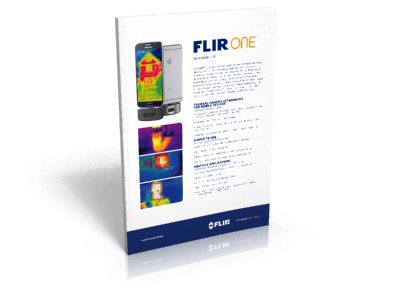
#FLIR FILE SECURE INSTALL#
It is always recommended that you install packages inside a virtualenv or Conda environment.Teledyne Technologies Incorporated provides enabling technologies for industrial growth markets that require advanced technology and high reliability. If you are familiar with multi-modal video synchronisation, we'd love to hear from you! Installationįlirpy has been tested with Python 3 and may work on Python 2. Generally it's difficult to sync the two streams because they do not start simultaneously and when the IR camera flat fields, it can cause odd discontinuities in the data.


If SEQ file 1 contains 1800 frames, the first frame from SEQ file 2 will be numbered 1800. The tiff images will be geotagged if GPS information is present in the raw data. If you do need raw counts for some reason, you can use the -no_export_radiometric flag. This is mostly to save disk space as it's unlikely you need the raw files hanging around. Preview 8-bit RGB representations of the radiometric dataīy default, the raw folder will be deleted and all the metadata files will be copied to the radiometric folder.Raw (FFF) files with metadata text files.By default the splitter will three kinds of files, separated by subfolder. If you specify a directoy, all SEQ files in that diretory will be used.įiles will be extracted to folders with the same base name as the SEQ file, for example 20180101_1030.SEQ will be extracted to 20180101_1030, etc. If you use wildcards, be sure to enclose the argument in quotes, otherwise your shell will expand the wildcard before running the program and confuse it. Split_seqs accepts either a directory, a specific filename, or a wildcard string (e.g. If you have trouble splitting your SEQ files, then specify the width and height parameters in this script and it will fall back to using Exiftool. no_sync_rgb Attempt to synchronise RGB/IR streams (default: False)įlirpy includes an experimental FFF interpreter that attempts to load metadata and other information directly from the file headers. sync_rgb Attempt to synchronise RGB/IR streams (default: False) no_skip_thermal Skip thermal processing (default: False)

skip_thermal Skip thermal processing (default: False) no_export_preview Export 8-bit preview png files (default: True) export_preview Export 8-bit preview png files (default: True) no_export_raw Leave raw files (by default copy meta to radiometric) export_raw Leave raw files (by default copy meta to radiometric) no_export_tiff Export radiometric tiff files (default: True) export_tiff Export radiometric tiff files (default: True) no_export_meta Export meta information files (also for geotagging) export_meta Export meta information files (also for geotagging) no_split_filetypes Split output files by type (make Raw/preview/radiometric folders) (default: True) split_filetypes Split output files by type (make no_merge_folders Merge output folders (and remove intermediates merge_folders Merge output folders (and remove intermediates height HEIGHT Image height (default: None) width WIDTH Image width (if unspecified flirpy will attempt to copy Copy first, instead of move after split (default: use_gstreamer Use Gstreamer for video decoding (default: False) rgb RGB If provided, split videos too e.g. Output preview format (png, jpg, tiff) (default: jpg) h, -help show this help message and exit raw conversionįlirpy includes a convenience utility split_seqs for splitting FLIR sequence (SEQ) files. flirpy.util contains helper functions e.g.

#FLIR FILE SECURE PORTABLE#
I have tried to ensure that certain functions are portable between Python 2 and 3, mainly those involved with camera communication (for example if you want to use flirpy with ROS, most of the important stuff works). It is strongly recommended that you use Python 3.
#FLIR FILE SECURE BLUETOOTH#
Many of FLIR's cameras use proprietary bluetooth interfaces for control and there are no APIs available. If your camera is not on this list and it does not produce SEQ files, then flirpy probably does not support it.


 0 kommentar(er)
0 kommentar(er)
